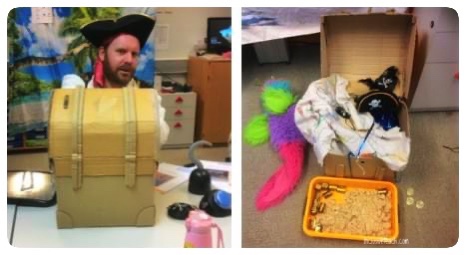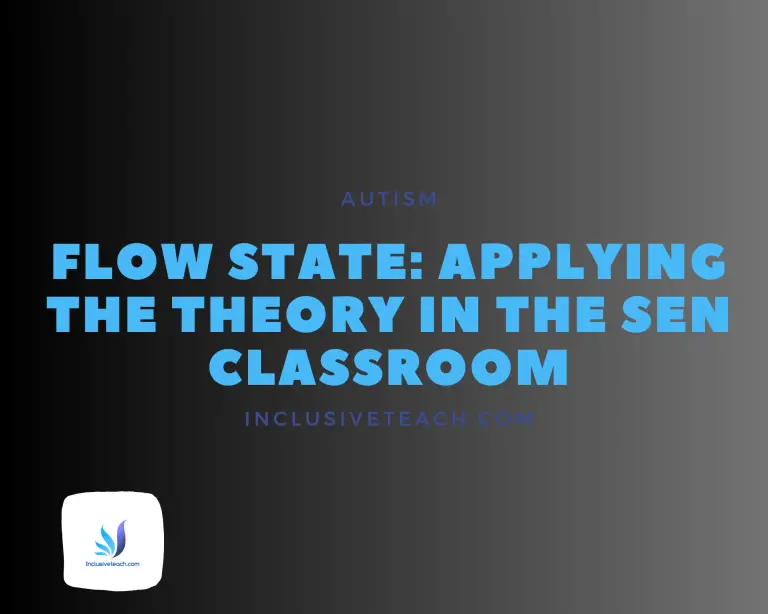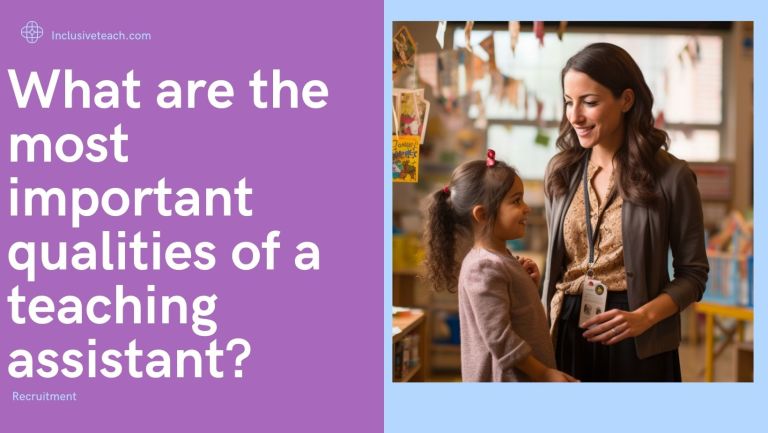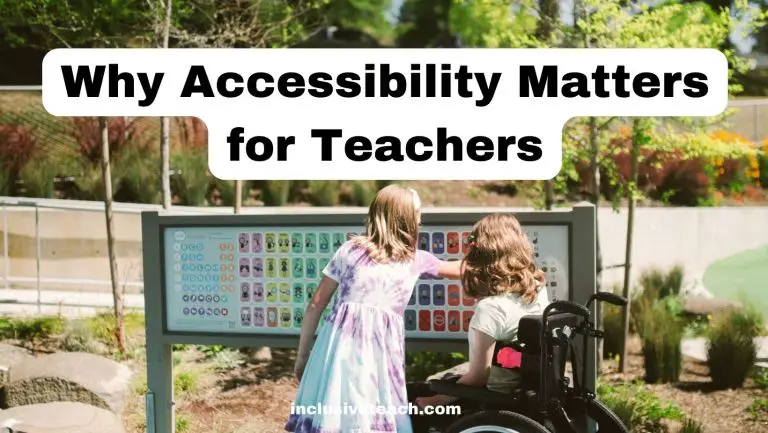Developing Communication Skills For Pupils in The Classroom
One of the most significant challenges for teachers supporting children with a diagnosis of Autism is the development of language skills. This is not necessarily verbal communication. As teachers we seek to develop communication to a point where the child can intentionally communicate with as wide a range of people as possible. Yes – this also means educating the community to understand the communication preferences of our pupils. This is not a simple task. With appropriate interventions and support, autistic children can develop the skills to enhance their communication and interaction skills. To make it work you need the right people who “get” the child!
The first steps in developing language skills in autistic children is to identify the child’s current strengths and weaknesses in communication. This assessment can involve observing the child’s behaviour and communication patterns and identifying any areas of difficulty, or to put it another way areas where we believe the child has the potential to develop. It will also involve assessing the child’s cognitive skills, such as working and long term memory and attention, as these skills influence language development.
Augmentative and Alternative Communication (AAC)
Once the child’s strengths have been identified, appropriate interventions can be implemented. A popular approach to developing language skills in autistic children is the use of Augmentative and Alternative Communication (AAC) interventions. AAC interventions are used to support communication when a child is unable to communicate verbally, or when verbal communication is limited or difficult for the child. The range of AAC interventions can include the use of communication devices, such as tablets or speech-generating devices, or the use of pictures, symbols, or sign language.
AAC interventions have been found to be effective in improving communication skills in minimally verbal, or pre-verbal children (Brignell et al 2018). In one study that used an AAC intervention, there were significant gains in the frequency of Picture Exchange Communication System (PECS) use and verbal and non‐verbal initiations, but not in expressive vocabulary or social communication immediately post-intervention. In another study, autistic children who received AAC intervention were found to have improved communication skills, including increased vocabulary, sentence length, and expressive language.
Levels of Demand and Don’t Forget the Joy!
I like to use low demand games to introduce and reinforce AAC based communication. Learning through play is essential. The child must see the value in communicating and fun or Joy can help facilitate this. I have shared all my AAC games and resources on this page.
AAC interventions may not be suitable for all children, and other intervention approaches may be necessary. Speech therapy can help autistic children develop their articulation, vocabulary, and sentence structure. Social skills training can help children with ASD learn social communication skills, such as turn-taking, initiating conversations, and understanding nonverbal cues. I think that this should be as child led as possible. Who are we to decide what “social skills” should be taught?
The Right Learning Environment.
In addition to intervention approaches, it is also important to create a supportive learning environment for all children. I have talked about this a lot on this site. A classroom, even with adaptations, can be an aversive environment. We need to make sure the learning spaces are as conducive to learning as possible. This can involve creating structured routines and schedules, providing visual aids and support, and creating a sensory-friendly environment. A huge number of children struggle with sensory processing, so creating an environment that is comfortable for them can help reduce anxiety and improve learning outcomes. an anxious or stressed child is not ready to learn.
Another approach to developing language skills in autistic children is the use of play-based interventions. Play-based interventions are designed to incorporate language development into play activities, which can help children learn communication skills in a natural and engaging way. These type of interventions can involve the use of toys, games, and other play materials to facilitate communication and social interaction.
Play-Based Interventions for Supporting Communication
Play-based interventions are an important aspect of supporting language development in autistic children. Here are 5 play-based interventions for autistic children:
- Floortime: Floortime is a play-based intervention developed by Dr. Stanley Greenspan. The goal of this intervention is to support social and emotional development in children with autism. It involves getting down on the floor with the child and engaging in play that is directed by the child’s interests. The therapist follows the child’s lead and supports the child in engaging in back-and-forth interactions that involve gestures, and vocalisations. It does talk about eye-contact which we need to accept should not be forced or be seen as a proxy for attention.
- Social Stories: Social Stories are short stories that are designed to help children with autism learn new social skills or behaviours. The stories are written in a way that is easy for the child to understand, and they include visual cues. Social Stories can be used to teach children about appropriate play behaviours, such as sharing and taking turns. They can also reinforce things that may happen i.e during a visit to the dentist to reduce anxiety.
- Sensory Integration Therapy: Sensory Integration Therapy involves using play-based activities to help autistic children regulate their sensory input. This therapy is based on the theory that autistic children have difficulty processing sensory information (Koenig & Rudney 2010) which can impact their ability to engage in play and social interactions. Sensory Integration Therapy involves engaging the child in activities that stimulate their senses, such as playing with sand, water, or textured materials.
- Pivotal Response Treatment: Pivotal Response Treatment is a play-based intervention that is designed to improve communication, socialisation, and behaviour. This intervention involves identifying “pivotal” behaviours that are important for social and emotional development. The therapist uses play-based activities to support the child in practicing these behaviours.
- Play Therapy: Play Therapy is a form of therapy that involves using play-based activities to help children work through emotional or behavioural challenges. This type of therapy can be particularly effective for autistic children, as it provides a nonverbal way of expressing emotions and developing social skills. Play Therapy may involve engaging the child in pretend play or using toys and games to promote social interaction.
- DIR/Floortime: DIR/Floortime is a developmental intervention that focuses on supporting the child’s natural development through play-based activities. This intervention involves following the child’s lead and engaging in play that is based on the child’s interests.

A Suggested AAC based Lesson Plan
Here is a suggested lesson idea, based on a Pirate topic. It uses some of the resources from this website including our free Pirate Sensory story.
Parental Involvement In Developing Communication.
Parent involvement is also crucial in developing language skills in autistic children. Parents can provide support and reinforcement at home, helping to reinforce skills learned in intervention sessions. They can also create opportunities for their child to practice communication skills in real-life situations, such as at home or in the community. Parents can also work with educators and therapists to ensure that their child is receiving appropriate support and intervention.
Language development in autistic children is a complex process that may involve a range of intervention approaches and strategies. The most effective intervention approach will depend on the child’s individual needs, strengths, and weaknesses. It is also important to consider the child’s age, cognitive abilities, and developmental level when designing intervention approaches. Early intervention is crucial in developing language skills in autistic children, and ongoing support is necessary to ensure continued progress and success.
References:
Kristie Patten Koenig, Sarah G. Rudney; Performance Challenges for Children and Adolescents With Difficulty Processing and Integrating Sensory Information: A Systematic Review. Am J Occup Ther May/June 2010, Vol. 64(3), 430–442. doi: https://doi.org/10.5014/ajot.2010.09073
Costa-López, Borja, Rosario Ferrer-Cascales, Nicolás Ruiz-Robledillo, Natalia Albaladejo-Blázquez, and Monika Baryła-Matejczuk. 2021. “Relationship between Sensory Processing and Quality of Life: A Systematic Review” Journal of Clinical Medicine 10, no. 17: 3961. https://doi.org/10.3390/jcm10173961
Brignell A, Chenausky KV, Song H, Zhu J, Suo C, Morgan AT. Communication interventions for autism spectrum disorder in minimally verbal children. Cochrane Database of Systematic Reviews 2018, Issue 11. Art. No.: CD012324. DOI: 10.1002/14651858.CD012324.pub2. Accessed Here (Free) 06 April 2023.








3 Comments